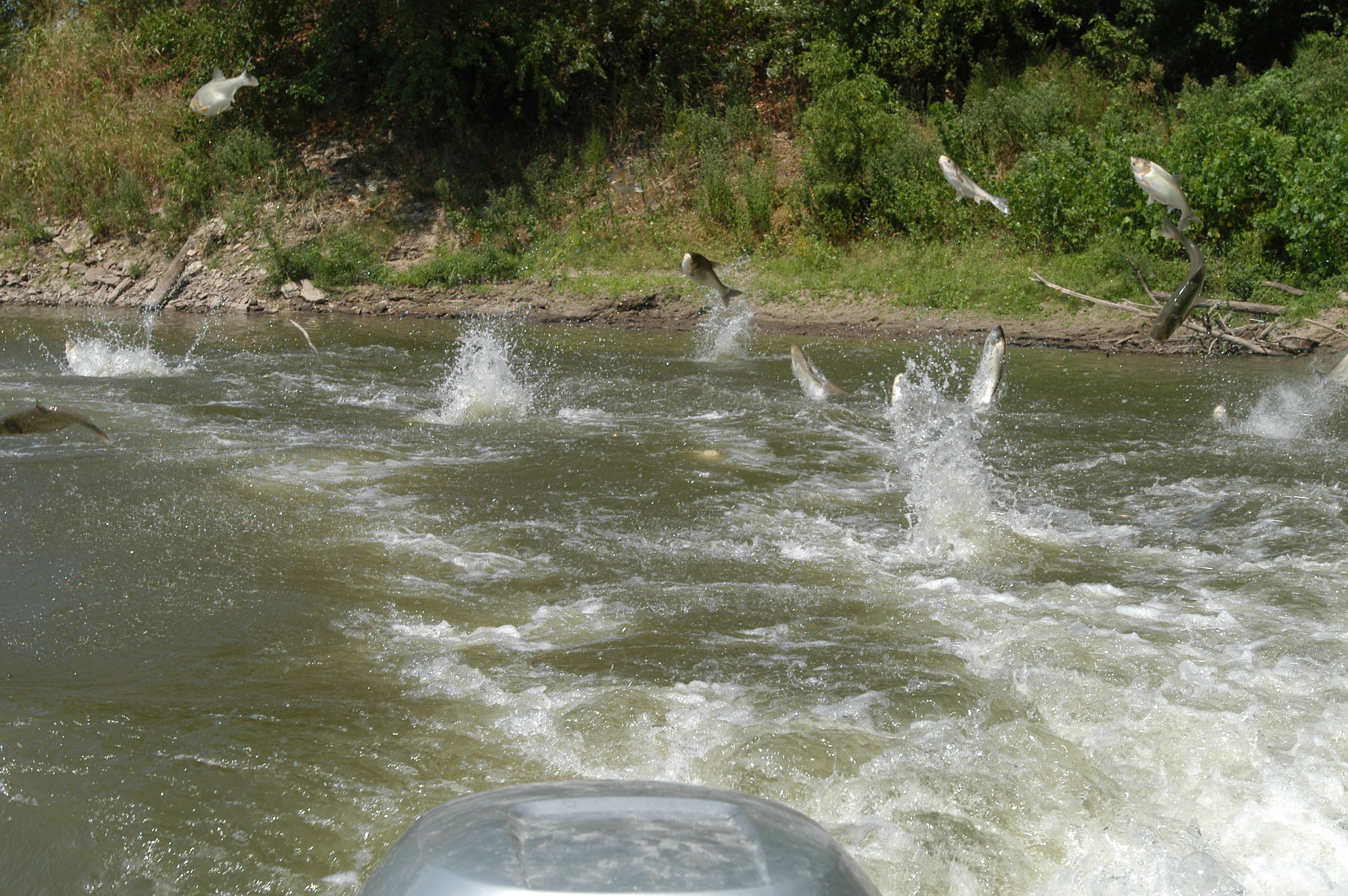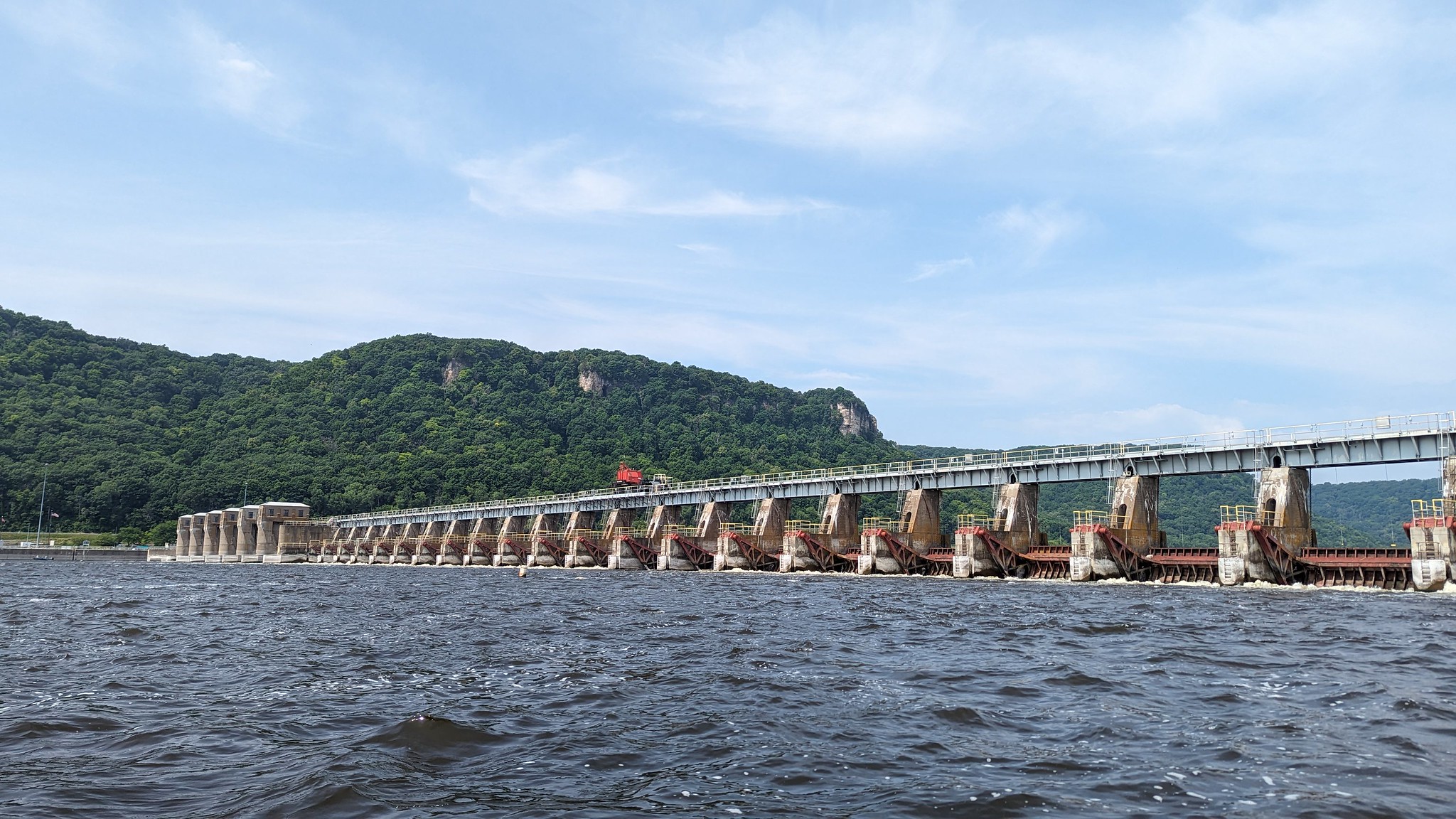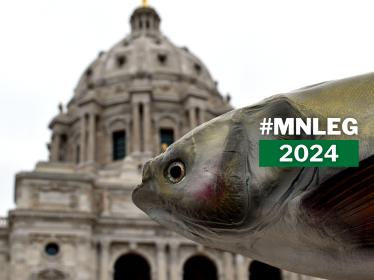Is there enough 'action' in the DNR's new invasive carp action plan?

Minnesota could still prevent the rapid spread of invasive carp into our waters — if we act now. (Photo by Jason Jenkins via ICRCC)
As a leader of the Stop Carp Coalition, FMR has spent the past few years advocating for an updated action plan on invasive carp. Last month the Minnesota DNR released the long-awaited Invasive Carp Action Plan to the public.
To develop this update, the DNR brought together researchers, partners from other agencies, advocates and other stakeholders. FMR participated in this months-long process to evaluate what we know about invasive carp, what our goals and values are for Minnesota’s waterways and what actions Minnesota should prioritize.
We think the resulting action plan is largely very good, but we’d like to see the DNR move with more urgency in one key area: a deterrent at Lock and Dam 5.
Why we need to act now
The DNR first published an invasive carp action plan in 2011, and last updated it in 2014. In the 10 years since, we've had more and more invasive carp in Minnesota waters. But we also have new research and management strategies.
Unlike some states downstream on the Mississippi River, Minnesota’s carp invasion is not severe — yet. We still have time to prevent a carp takeover here, and new tools give us options other states didn’t have available to them.
But increasing carp catches here tell us that we might not have much more time. We need to act decisively now.
What we think the DNR plan got right
We know there is no one silver bullet to stop invasive carp. No strategy will work on its own. We need to pursue several strategies at the same time, using the principles of integrated pest management.
So the plan includes strategies in five areas:
- Monitoring invasive carp’s presence in Minnesota through tagging, surveys, modeling and more
- Deterrents at locks and dams to prevent upstream movement
- Improving methods for fish capture and removal
- Expanding fish removal efforts, using both agency and contracted fishing
- Coordinating with partner agencies, researchers and community members
Woven throughout the action plan is an emphasis on continued research. That’s important because our current strategies still have significant gaps. We need to know more about carp behavior. There are also emergent control options to refine and consider, like improved fish removal tactics and genetic biocontrols (such as genetically modifying carp to prevent successful reproduction).
For the most part, we believe that the action plan encompasses the right ideas. We’re encouraged by the level of detail about how action steps will be carried out.
But we also know the clock is ticking. And while we still need to develop new tools, there is one strategy that we could implement now to buy us more time and potentially save Minnesota millions of dollars in the long run: an invasive carp deterrent.
The problem with the new plan
Deterrent systems can be installed at locks and dams to repel carp from moving upstream on the Mississippi River. (Here's how carp deterrents work.)
The DNR notes its strong support for making permanent the temporary, experimental deterrent currently in place at Lock and Dam 19 (near Iowa’s southern border). We agree; this deterrent’s early operations are promising, and we hope the federal government will provide the funding and permits to keep it in place.
However, Lock and Dam 19 is not going to protect Minnesota in full. Silver carp already reproduce above this dam to some degree (though some other invasive carp species do not).
That’s why Minnesota needs a deterrent in its own waters, a deterrent we can more directly fund and manage. State-funded research shows that Lock and Dam 5, about 10 miles upstream of Winona, is the most effective site.

A deterrent at Lock and Dam 5, just north of Winona, could help stop 99% of invasive carp from moving upstream.
We’re happy to see the DNR commit to exploring the feasibility of deterrents at this lock along with some other "backup" locations. However, we’d like to see the DNR commit to pursuing funding and construction of such a system as quickly as possible.
While further design and engineering is needed at Lock and Dam 5, much of the feasibility work is already complete. We can’t afford to spend years more studying the problem without a clear path to implementation.
Will the DNR again oppose funding for a deterrent?
On this implementation question, the DNR hasn’t had much to say. The agency has said that it is not planning to pursue funding for deterrent construction this year. When we advocated for funding for this at the Legislature last year, the DNR actually opposed our bill.
Last year, FMR's advocacy led to $1.7 million in new funding for the DNR to fight invasive carp. While the DNR opposed that bill at the time, the agency is now publicly appreciative of these funds, because they are available to support immediate implementation of the action plan (and also helped fund the action planning process itself).
We’re concerned that we may go through this same experience again this year: We’re advocating for the full funding for a carp deterrent that the DNR needs from the state Legislature.
Will the DNR oppose this funding again? When will the agency present an alternative plan to fund this project with proper urgency? Why aren't DNR leaders making protection from invasive carp a true priority in Minnesota?
Hundreds of people showed up to invasive carp meetings
We’re hoping that Minnesotans will join us in speaking up for our rivers and for decisive action to stop invasive carp.
To share all of this news, FMR and Lake Pepin Legacy Alliance recently held community meetings in St. Paul, Red Wing and Winona, as well as virtually. We are deeply appreciative that the DNR’s invasive carp staff joined us for every meeting to present the action plan and respond to questions. Nearly 250 people attended these events with important questions and real concerns.
If you missed the community meeting, the recording of our St. Paul meeting and live stream is available online.
We’ll have more opportunities to learn and advocate in the months ahead. Join us as a River Guardian to be the first to hear about how you can get involved.
FMR in the news
- Star Tribune: Minnesota DNR calls for stepping up battle against invasive carp, but postpones decision on barrier
- KSTP TV: Minnesota DNR rolls out action plan to prevent the spread of invasive carp
- Outdoor News: Minnesota DNR releases updated Invasive Carp Action Plan
- Star Tribune: An invasive carp deterrent is possible if Minnesotans play their cards right
Become a River Guardian
Sign up and we'll email you when important river issues arise. We make it quick and easy to contact decision-makers. River Guardians are also invited to special social hours and other events about legislative and metro river corridor issues.


